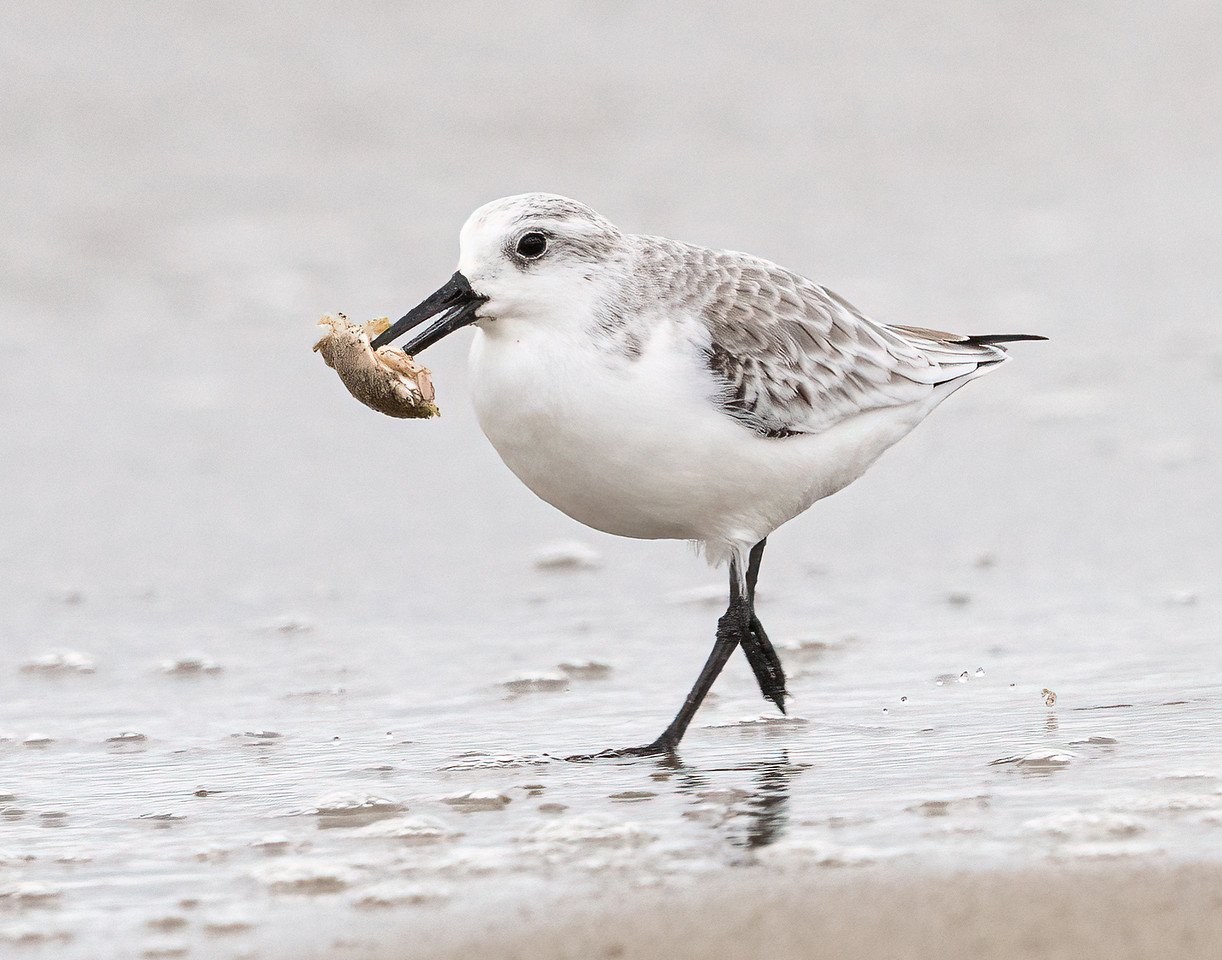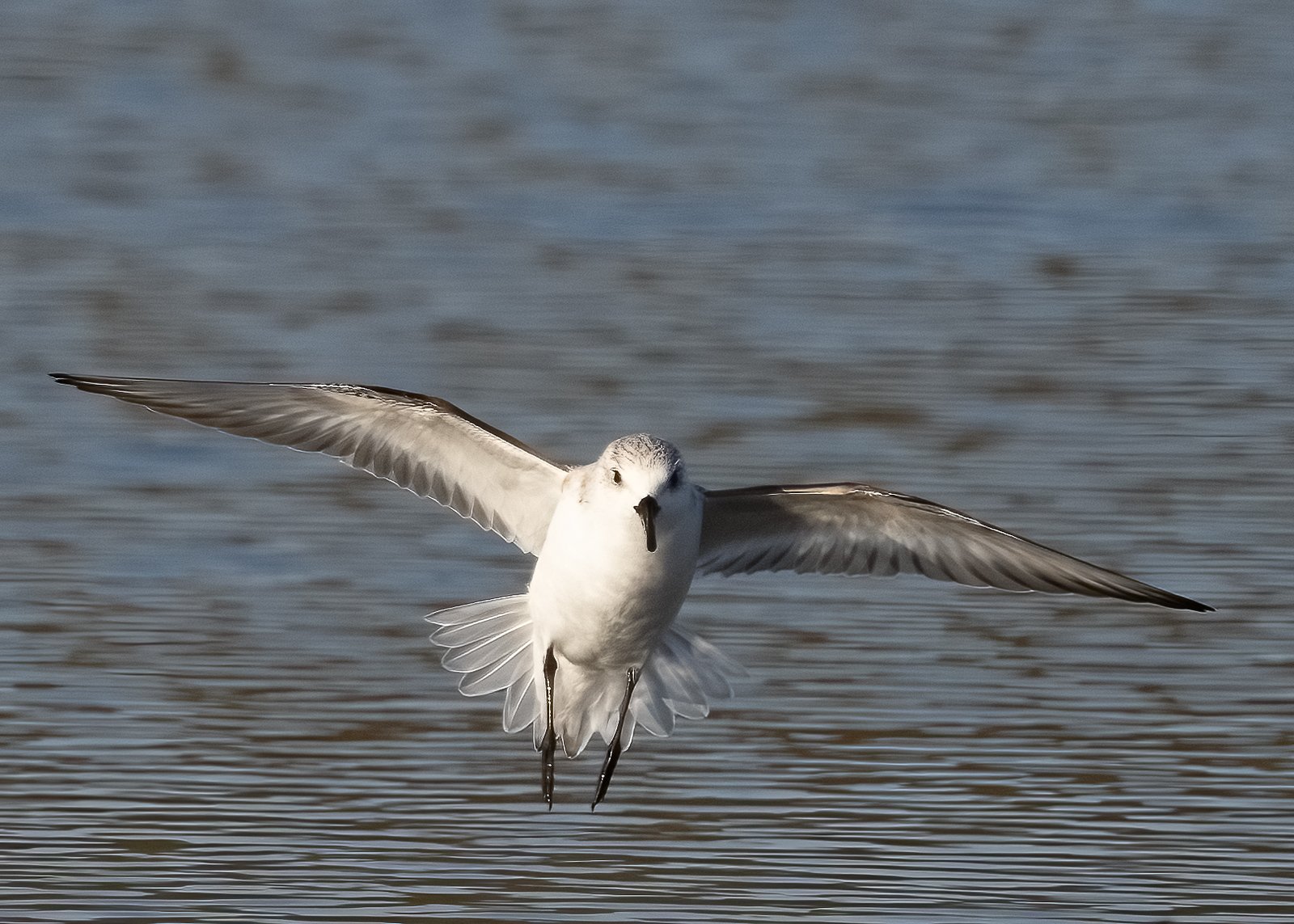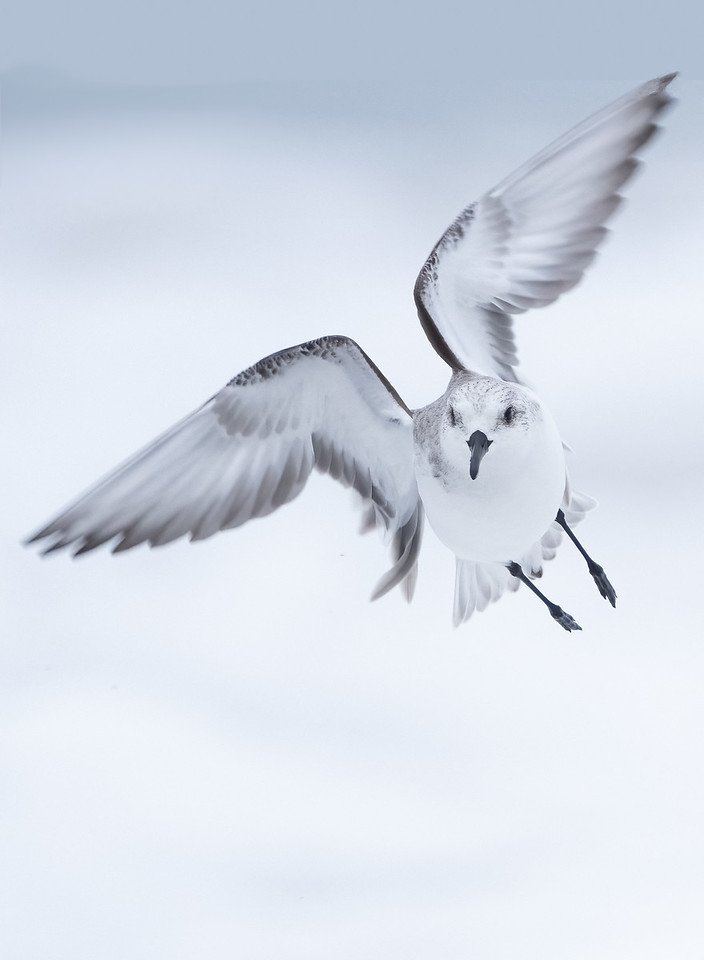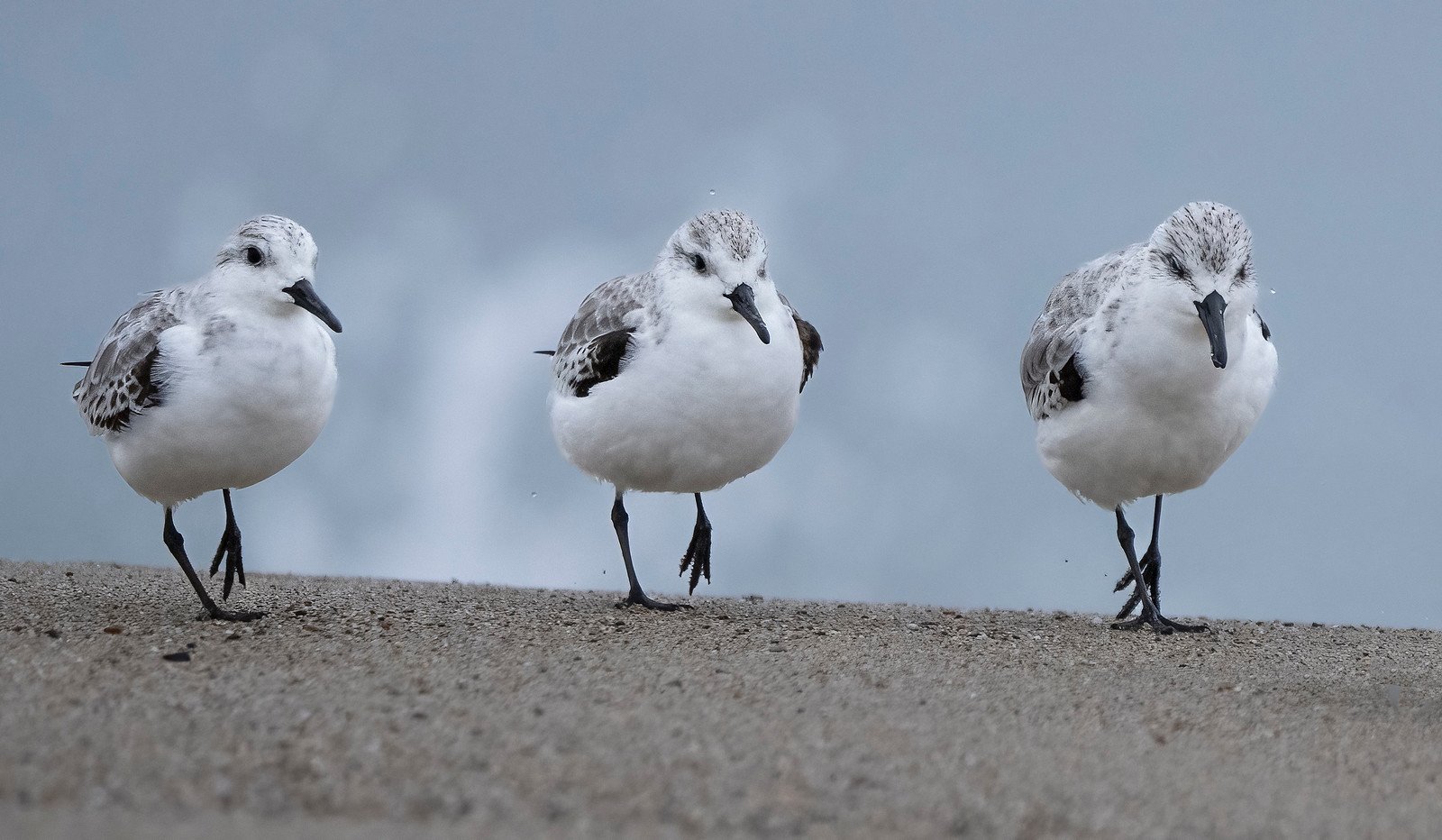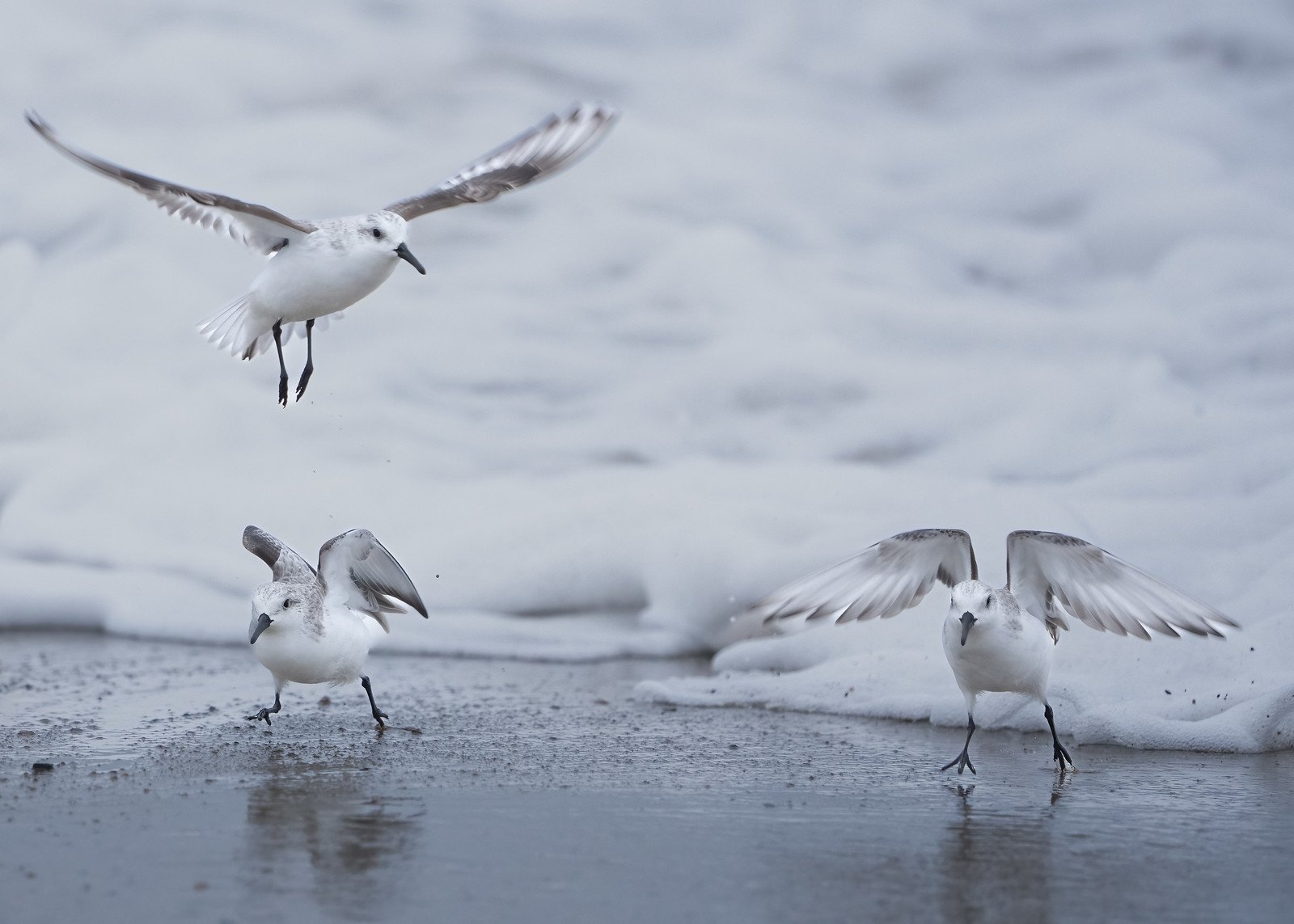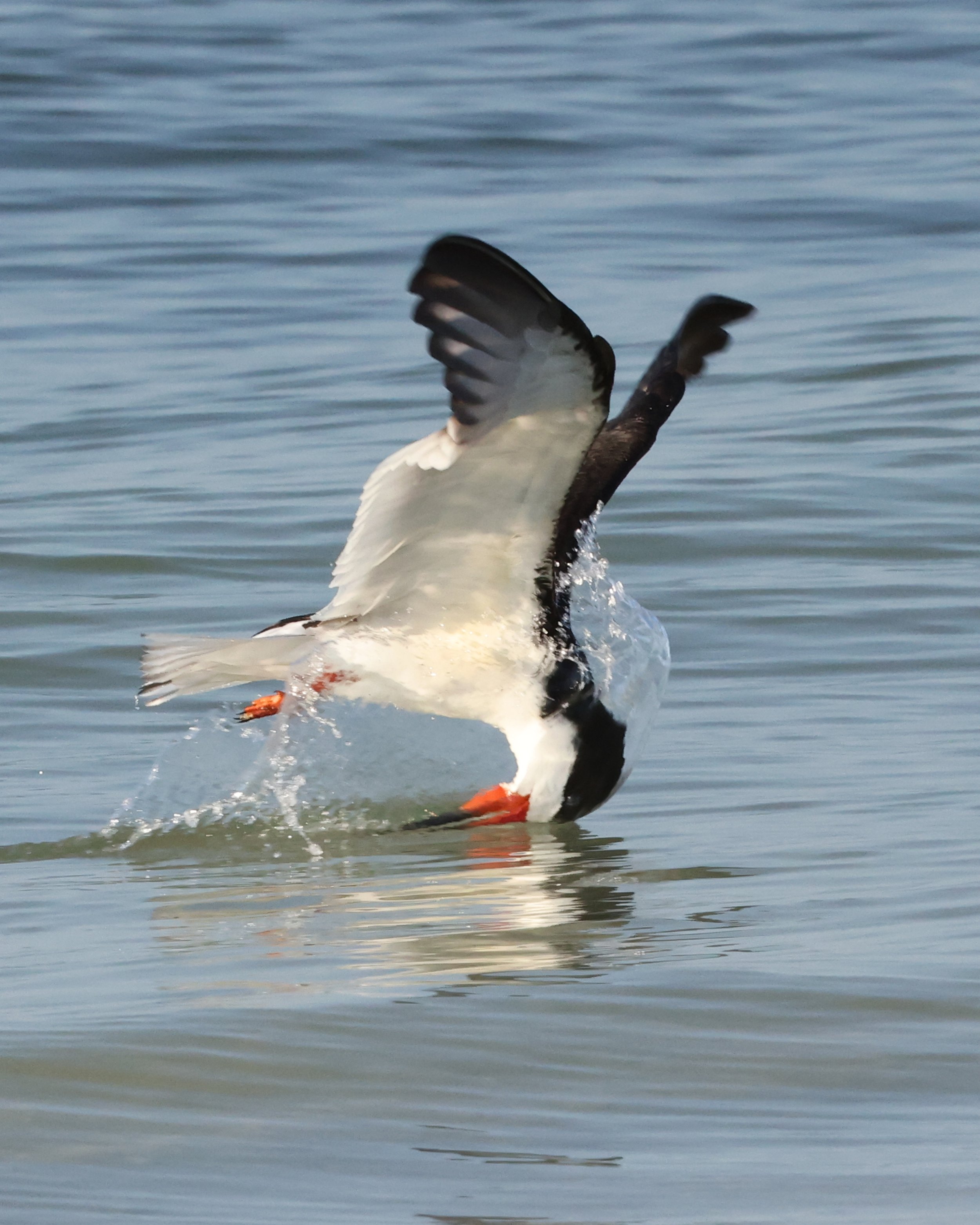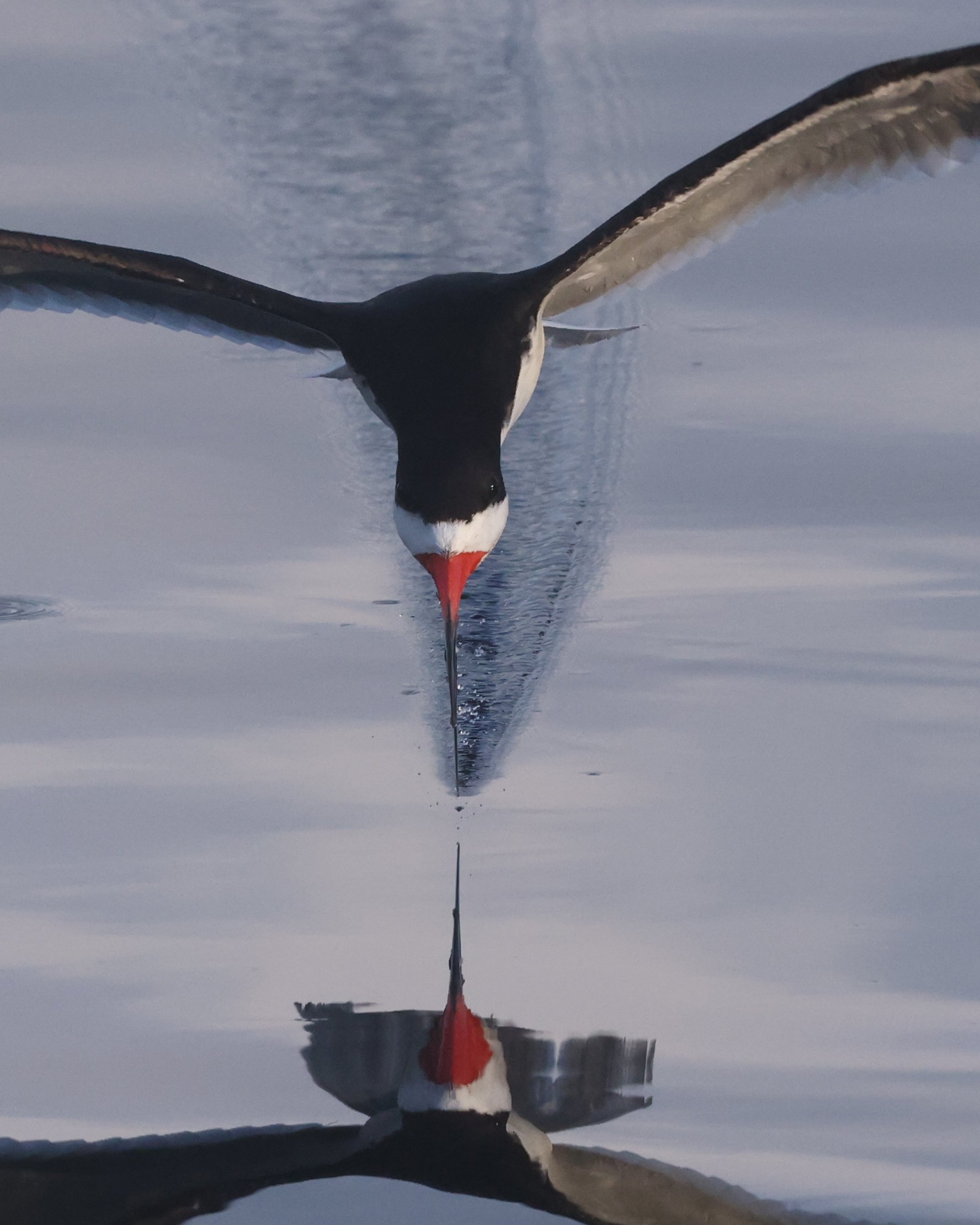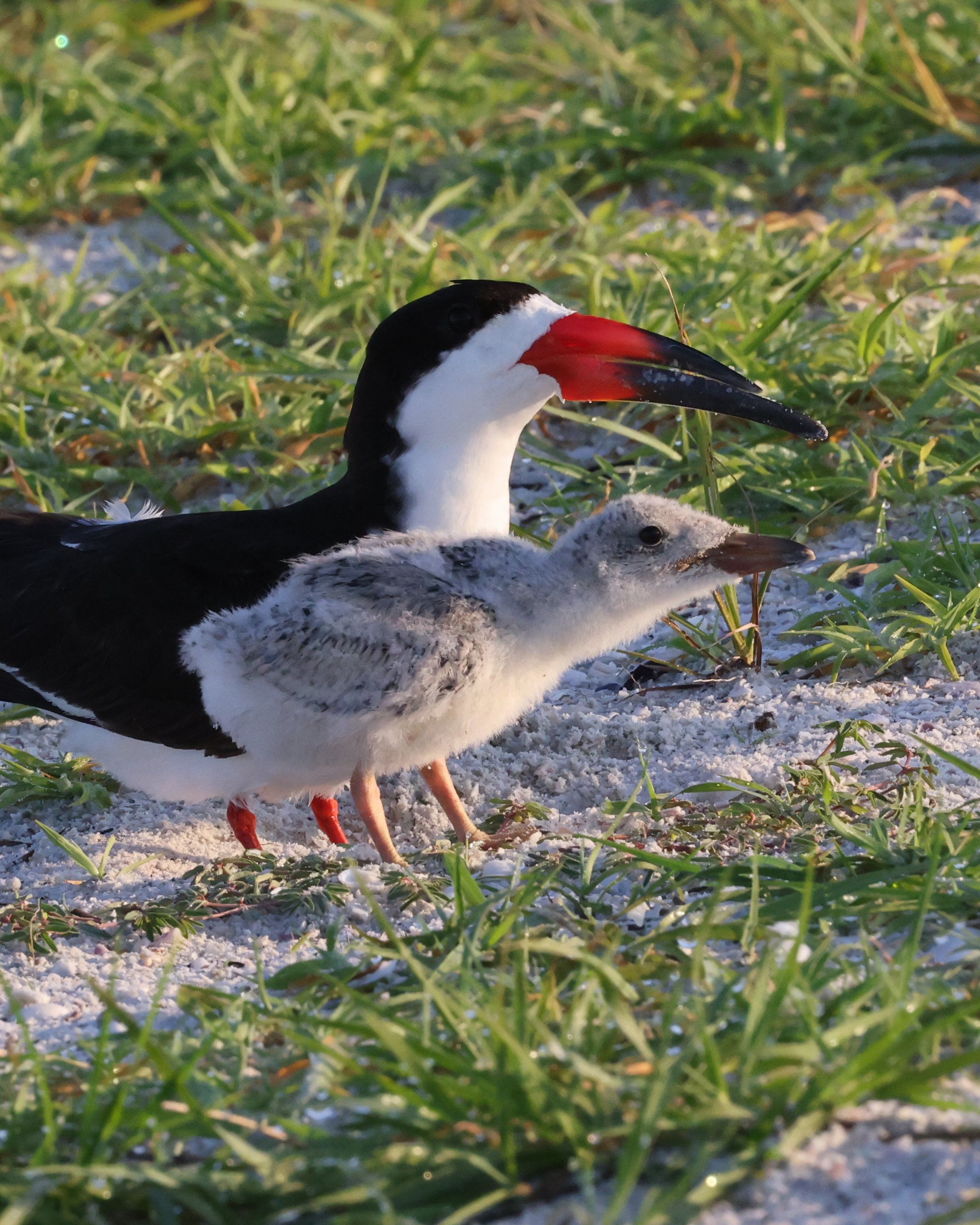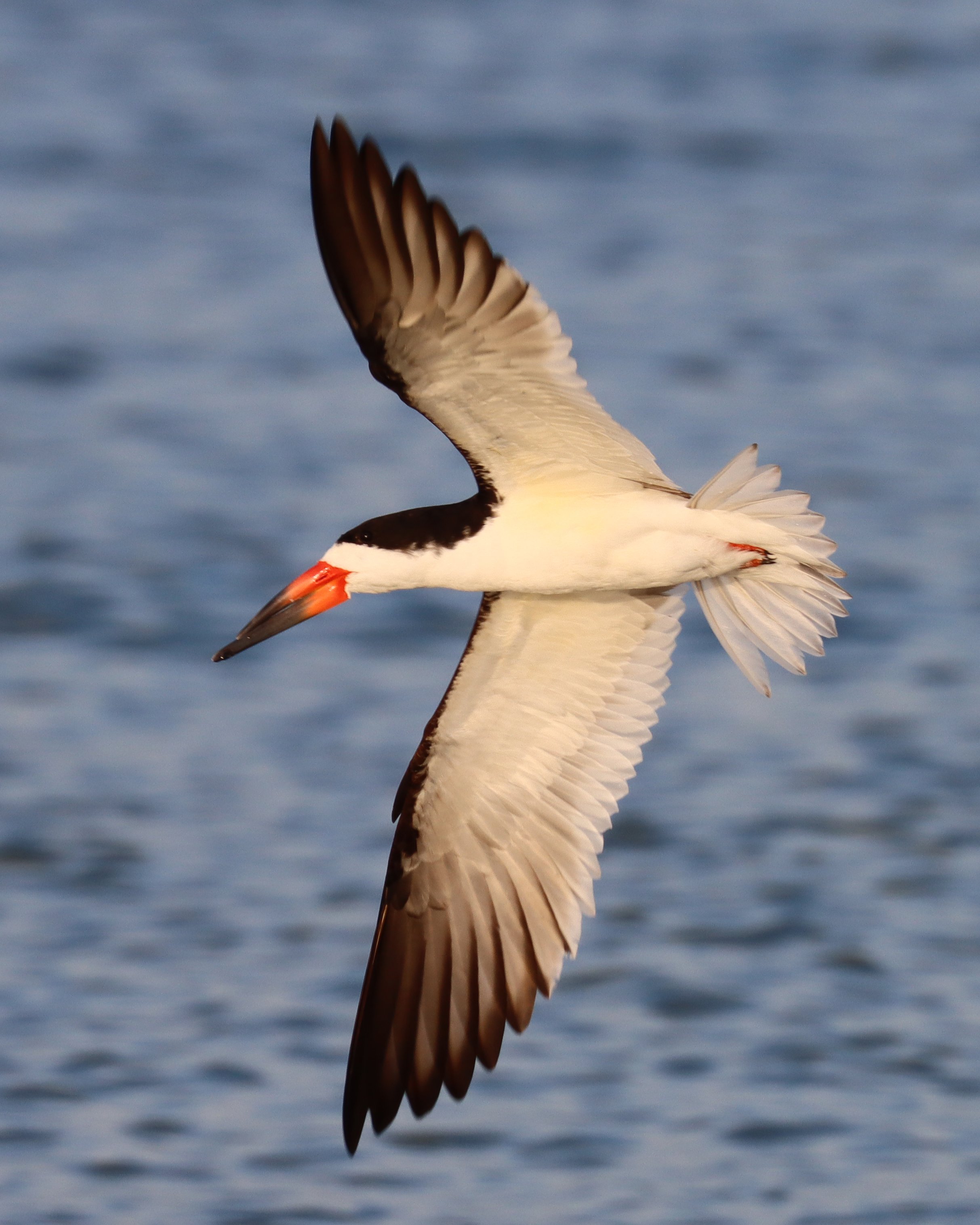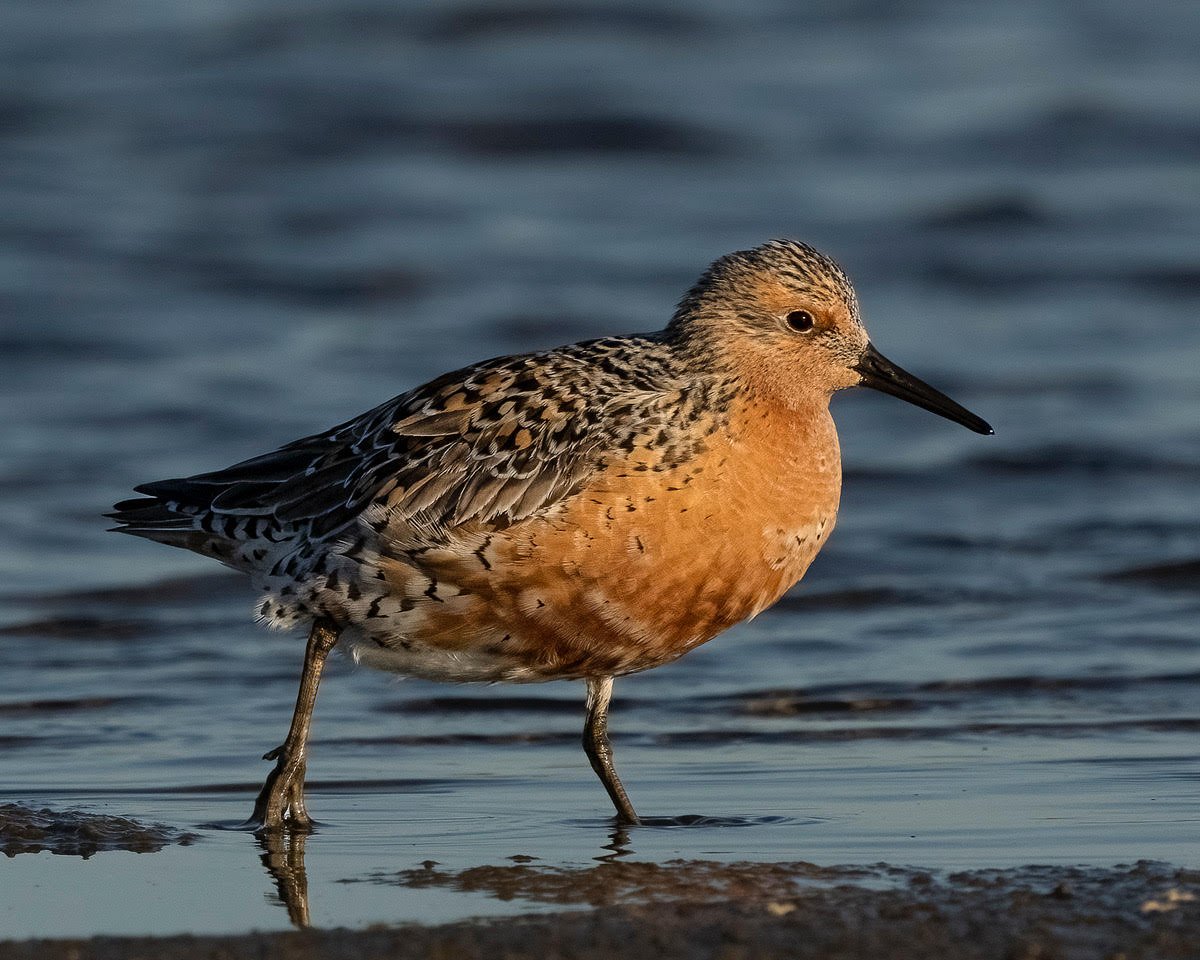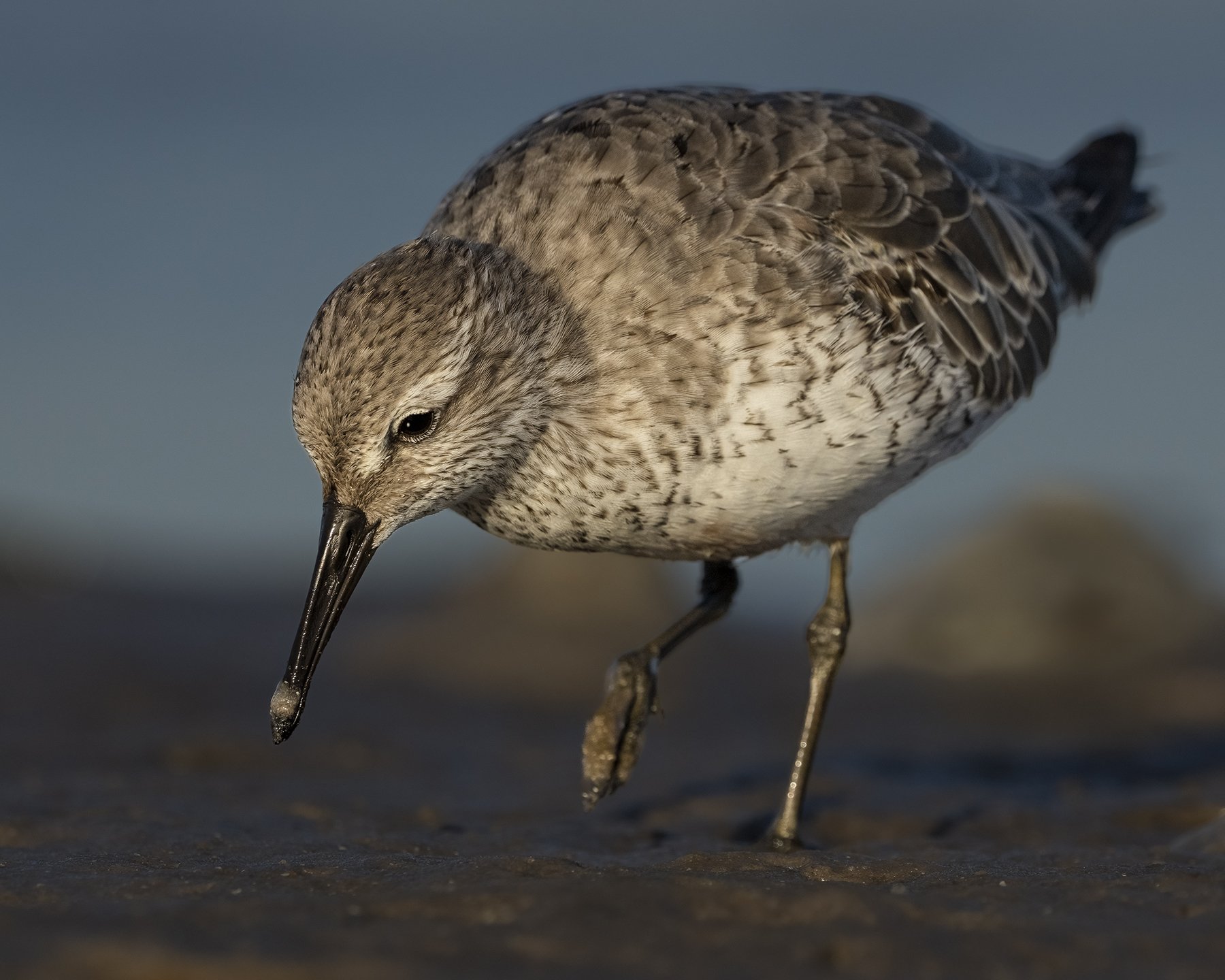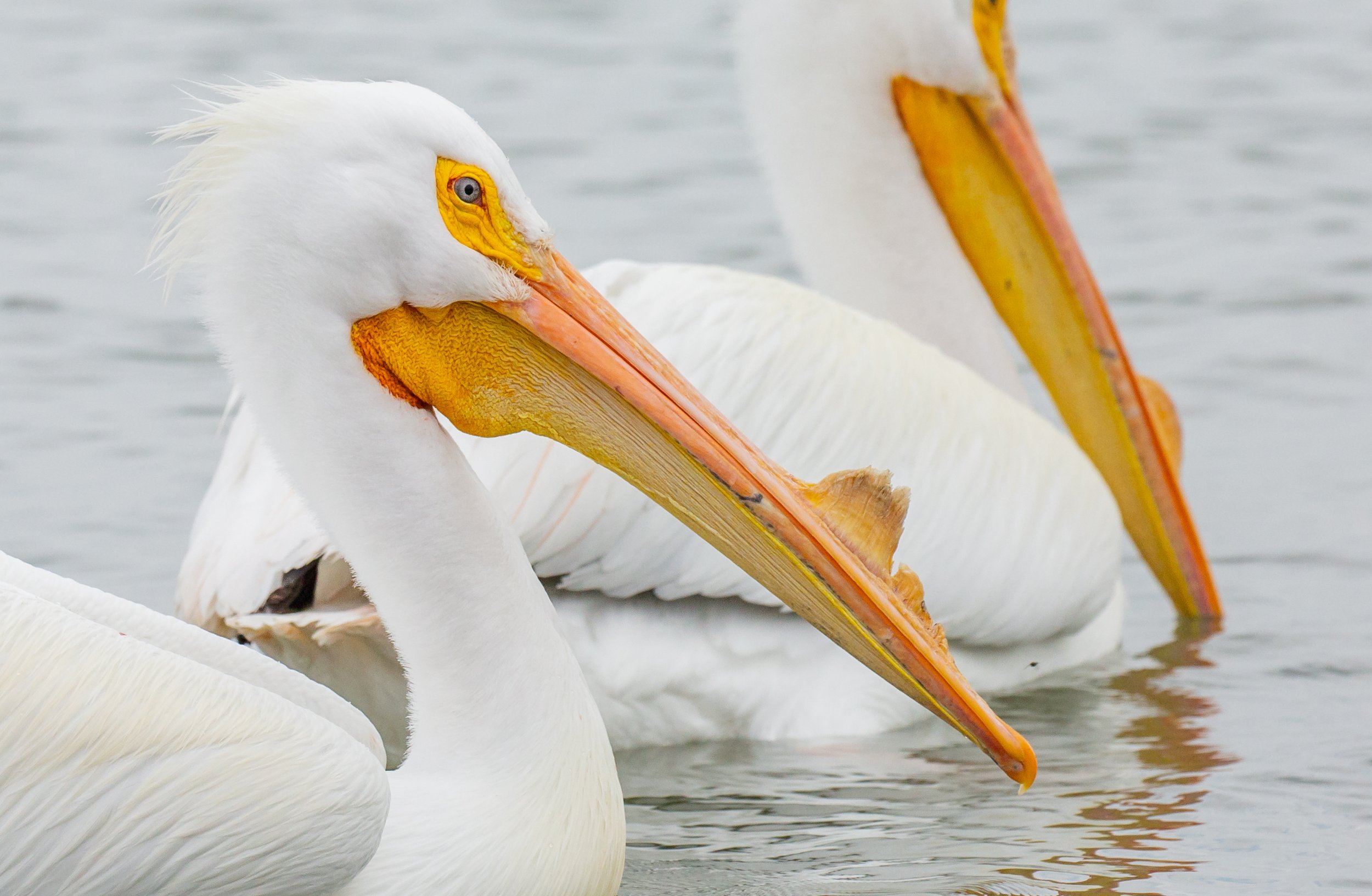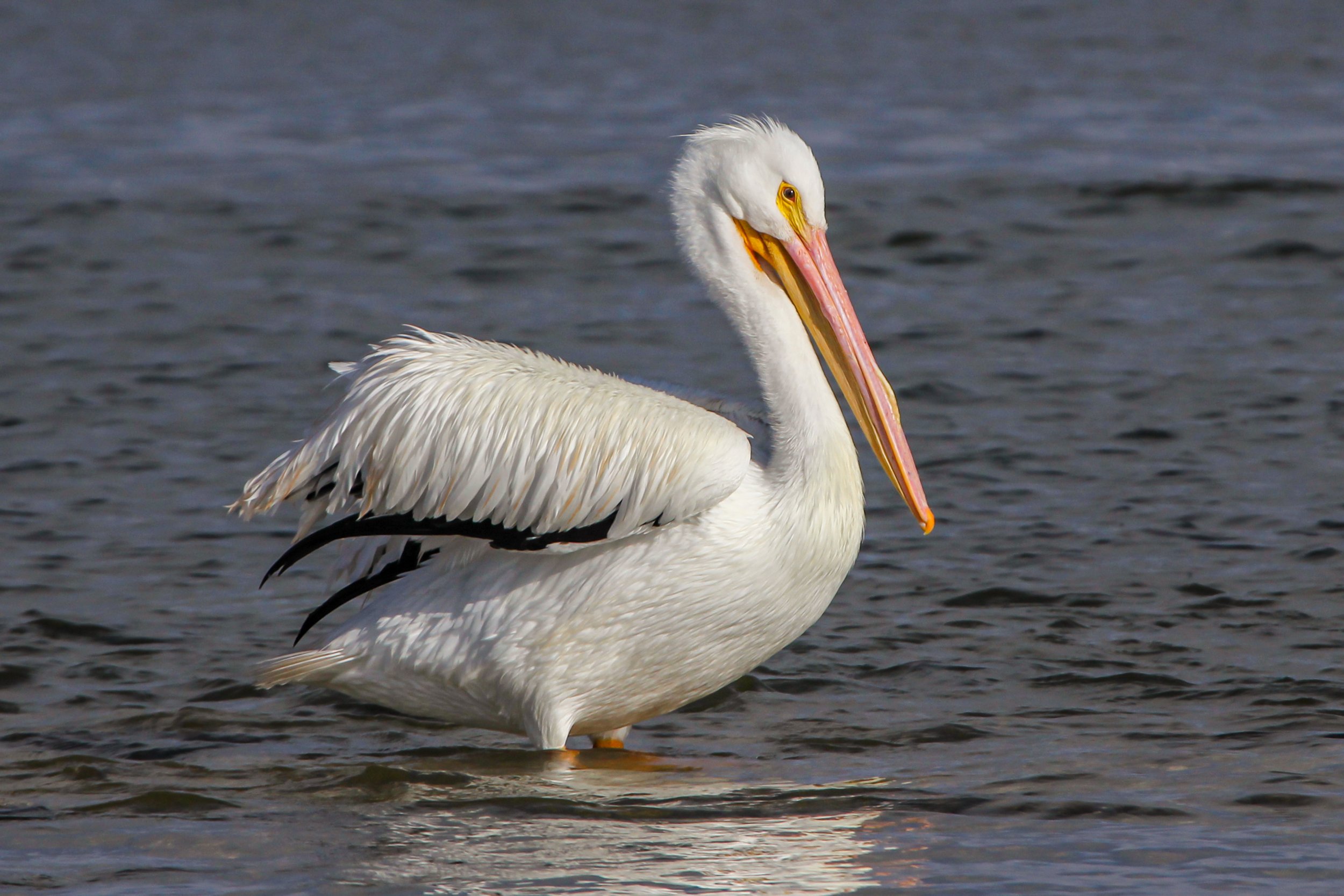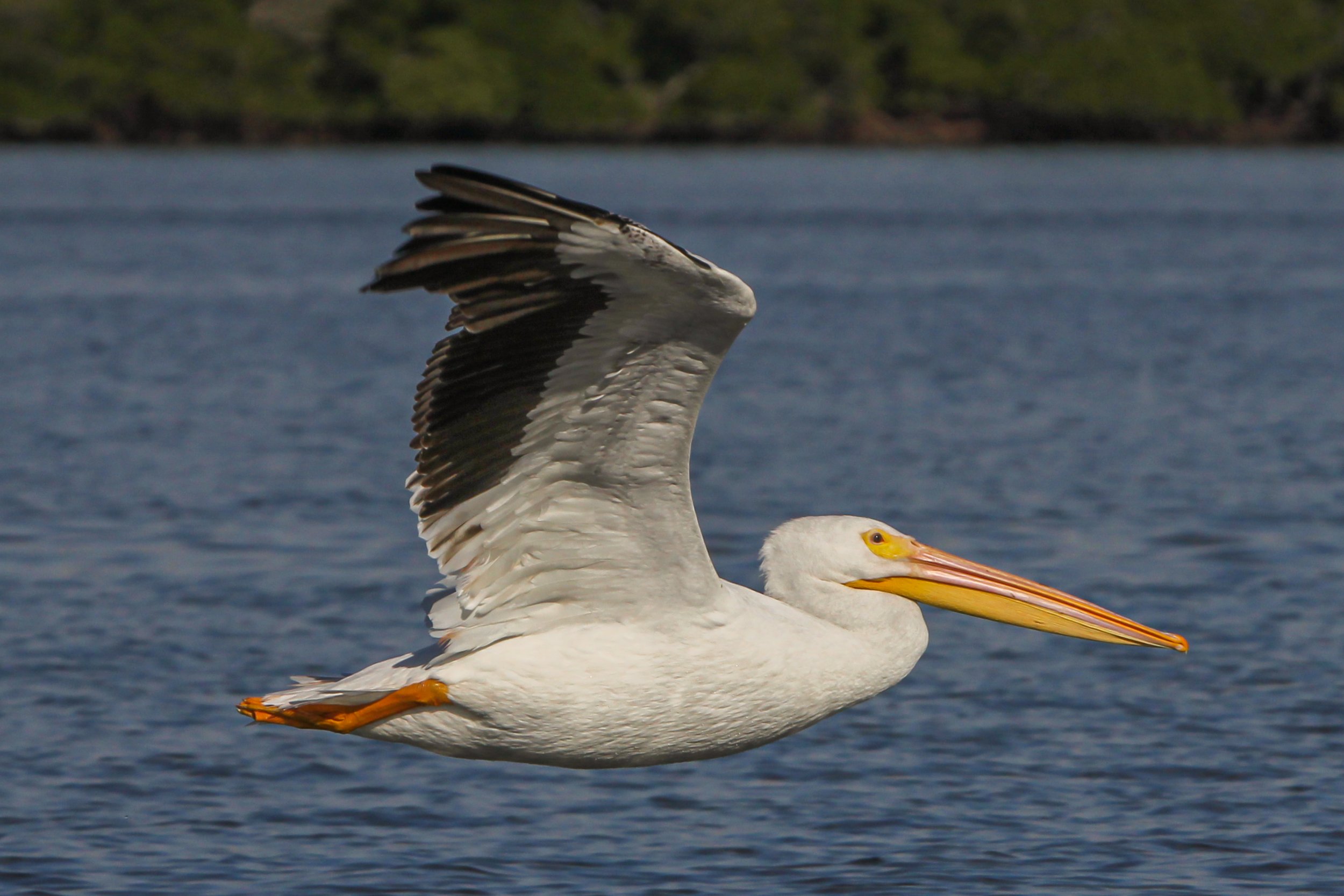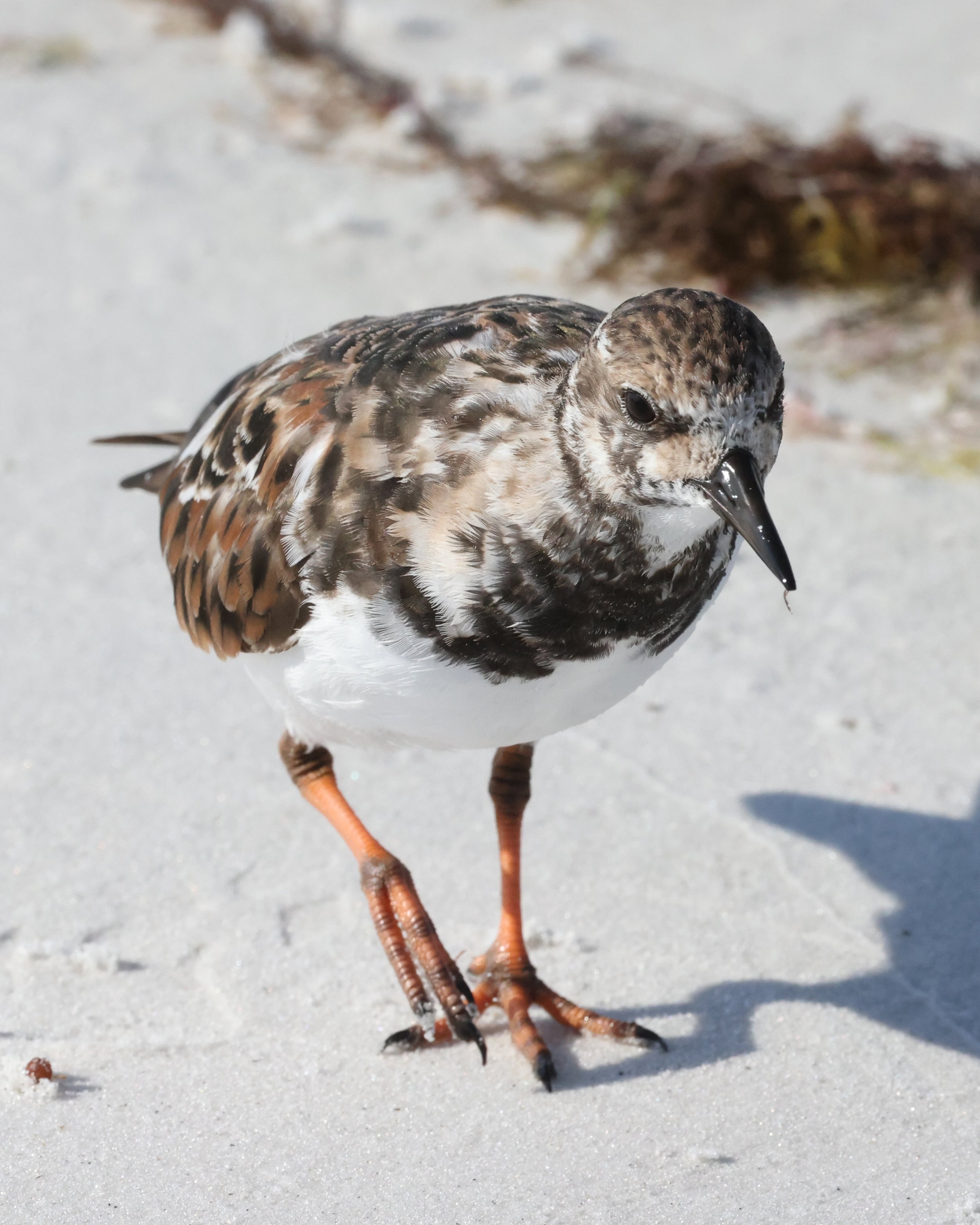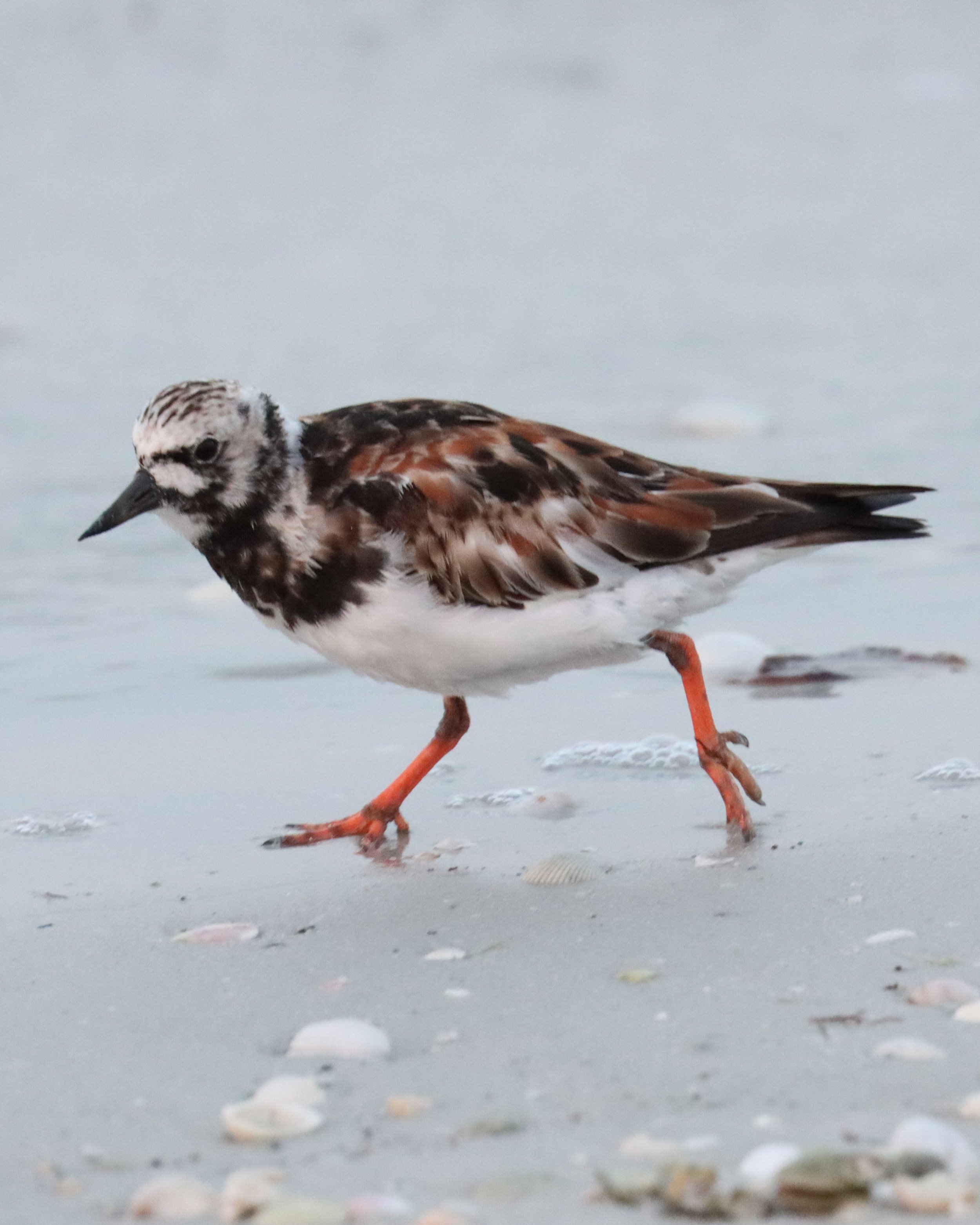SHORE BIRD PROFILES
Learn All About My Favorite Shore and Sea Birds
The fabulous photos below are compliments of the very talented Michael Lund, Pete Myers, and Jean Hall.
SANDERLING
Small shorebird averaging 7-8 inches in length. Sanderlings have black legs, black feet, and a short, stout black bill. In the winter, their plumage is pale with white head and chest and a gray back. When it is time to breed, the adults take on a darker, reddish appearance on their back and face. Young birds, or juveniles, have a checkered back and plain white underparts.
Sanderlings are long-distance migrants. They breed in the high Arctic tundra in summer feasting on the explosion of mosquito larva, flightless insects, and berries. They migrate thousands of miles in early fall to Florida and even South America to spend the winter on warm beaches with plentiful food. Sanderlings are unique because they lack a hind toe. They scurry along the beach, where the waves recede, on 3 forward-facing toes in search of marine invertebrates such as crabs, clams, and worms. They live for about 10 years.
BLACK SKIMMERS
Medium-sized, black-and-white bird with a distinctive orange-and-black bill, and short, stubby legs. The lower mandible extends far beyond the upper portion of the bill and is uniquely adapted to catch small fish in shallow water while “skimming” across the surface.
While awkward looking on land, they have a graceful, elegant flight. They are social birds and tend to rest, feed, and breed in groups. Adults will make a “scrape” nest on sandy or shelly ground and the female will lay 1-5 eggs. The parents feed the chicks for 3-4 weeks until they fledge. At hatching, the chick’s lower and upper bill will be equal in length so that they can pick up fish that the parent drops on the ground. By the time they fledge, the distinctive long, lower mandible will appear.
Many skimmers remain in Florida year-round, moving a short distance to a barrier island to breed in the summer. Skimmers that summer on the Atlantic coast from Massachusetts to Virginia and North Carolina, migrate to Florida for the winter and mix with the Florida birds. Black Skimmers can live as long as 20 years.
PIPING PLOVERS
Small, round, stocky plover that often stands more horizontally than up-right. It has a short, stout bill, and a sandy grey back that helps it blend into the wide, open beaches that it inhabits. Piping Plovers have large dark eyes. It’s breeding plumage shows a single black neck band, orange legs, and orange on its bill. Piping Plovers feed by running, stopping, and then probing with their bill for marine worms, small crustaceans, water beetles or other morsels hiding in the soft sand.
Piping Plovers nest right on the beach above the high tide line and are difficult to spot. These birds are endangered due to habitat loss, human disturbance during breeding, and predation. Conservation efforts include roping off critical areas of the beach during nesting season.
RED KNOTS
Large, plump sandpiper known for its rusty-red breeding plumage and extraordinary long-distance migrations. It breeds in the high Arctic and winters along the coast as far south as the tip of South America. Large flocks famously congregate in Delaware Bay during the spring migration to feast on horseshoe crab eggs.
While some Red Knots winter along Florida beaches, populations increase during migration season when Florida is used as a stopover. Their dull, gray winter plumage has few distinct markings, making identification a bit tricky. While in their winter range, Red Knots will often eat mollusks whole, crushing up the shells in their exceptionally large gizzards. Red Knots live for about 15 years.
ROYAL TERNS
Largest of the crested terns with a daggerlike, orange bill and a forked tail. Terns are seabirds and can spend long periods of time out on the water. Their shaggy black head crest turns to a full black cap during breeding season; legs and feet are black year-round. They are generally found in large, vocal groups along the coast and feed primarily on small fish by plunge-diving into shallow water from 5 to 10 meters in the air. Royal Terns are very social and often seen resting on beaches with other varieties of terns and gulls.
Royal Terns are known to be short-distant migrants, and many that winter in Florida come from Virginia or Georgia. Some Royal Terns stay year-round in Florida and move to a nearby barrier island for breeding. They nest in large colonies, making a small scrape on a sandy beach and laying 1-2 eggs. Soon after hatching, the chicks all congregate into a central nursery group or creche. The parents feed only their chicks, likely identifying them by their call.
SEMIPALMATED PLOVER
Small, plump, dark-backed plover with a brown neck band and eye-stripe, and a small white patch above the bill; legs are dull orange. The term semipalmated refers to the partial webbing between their toes. During breeding season, the eye and neck stripe become darker and the black bill gets an orange base. They are visual feeders and will run, stop, stare, and snatch prey from the surface. They will sometimes employ “foot-trembling or tapping” behavior to get prey to move so they can see it better.
Semipalmated Plovers are long-distance migrants and fly between the Arctic, where they breed, and the southern coasts of North America, Central America, and South America. Their nest is a small scrape on the open ground that they line with leaves and other debris. While the parents both tend the chicks, the chicks find all their own food which consists of insects and their larvae. Semipalmated Plovers live about 8-9 years.
WILLETS
Large, gray to brownish sandpiper with long legs and a long, thick, straight bill – even longer than its head. During breeding season, they acquire a darker plumage with heavy barring on the chest and dark speckles on the back. When flying, you can see the Willet’s broad, round wings with bold white wing-stripes. They are very vocal when startled and have a piercing call.
Willets are generally seen alone on beaches or mudflats probing for crabs, worms, and mollusks. They breed along the Atlantic coast of the U.S. and move south to Florida and beyond for winter. They will make their nest on bare ground or in short vegetation that is protected by a barrier dune and generally lay 4 eggs. Both parents incubate the eggs, defend the chicks, and teach them to feed. The female generally heads south first, leaving the male to finish raising the chicks. Willets can live for about 10 years.
WHITE PELICANS
One of the largest birds in North American with a wingspan of 9 feet. They are similar in shape to a Brown Pelican but much larger with very different behavior. They do not dive down to catch fish, but swim on the surface dipping their bill down in the water to scoop up fish in their pouch. At times they work cooperatively to drive schooling fish toward the shallows where they can easily scoop them up.
White Pelicans breed on isolated islands in freshwater lakes in the northern Great Plains. They nest on the ground among sparse vegetation and raise a single chick. Parents must catch about 150 pounds of fish to nourish a single chick from birth to the time it can hunt on its own! They are excellent fliers for their size and migrate to Mexico and along the Gulf Coast and Florida for the winter in large groups. If they get too hot they will face away from the sun and flutter their bill pouch, which contains many blood vessels, to let their body heat escape. White Pelicans can live over 20 years.
WILSON’S PLOVER
Medium-sized shorebird with a brown back, white underparts, a very thick, black bill, and large eyes. When breeding, it has a single white breast band. It is larger than a Semipalmated Plover (which also has a single neck band). Wilson’s Plovers are expert hunters of fiddler crabs on the mudflats at low tide, thus their oversized looking bill. They can also eat a variety of insects and marine invertebrates such as marine worms, dragonflies, and ghost crabs. When resting or nesting, they stay higher up on the beach where they blend in with the dunes and hide in the vegetation.
They remain in Florida year-round, nesting on the beaches, and do not migrate. Their populations are declining due to beach disturbance and development. Wilson’s Plover live about 10 years.
LEAST SANDPIPER
The smallest sandpiper in the world – weighing about 1 ounce and measuring 5-6 inches long! They have distinctive yellow-green legs, a brown back, and white underparts. A short, thin black bill allows them to hunt for little crustaceans, insects and other invertebrates along tidal creeks and the edge of salt marshes. They tend to avoid wide-open beaches and tidal flats where they are outnumbered by the bigger shorebirds.
The Least Sandpiper nests in the tundra of the extreme northern part of North America. They nest in tufts of short marsh grass or in mossy hammocks. The female lays 3-4 eggs and the chicks leave the nest and begin to feed after just one day. The males will stay and defend the chicks until they can fly.
Once breeding season concludes in the Arctic, Least Sandpipers head south to the Gulf coast of the U.S. or northeastern South America for the winter. They can fly amazing distances non-stop during migration, sometimes as much as 2,000 miles! Least Sandpipers can live 15 years.
Ruddy turnstone
The Ruddy Turnstone is a short, stocky, oval-shaped shorebird. Its bill is stout and a bit upturned. It is slightly larger than a Sanderling. During breeding season, the males have a striking appearance with black-and-white markings on the head and a calico pattern on the back. Non-breeding adults are more muted brown and white. All Ruddy Turnstones have orange legs, but they are brighter during breeding season.
Ruddy Turnstones spend their winters along sandy beaches and nearby mudflats - flipping rocks, shells, and seaweed along the shoreline in search of food (that’s how they got their name!). They even have specially design “spiny” feet with sharply curved toenails to help them grip the rocks as they walk. Ruddy Turnstones are generally seen in the company of a variety of shorebirds including sandpipers and plovers, as well as gulls and skimmers. Marine invertebrates including small crustaceans and insects make up their diet during the nonbreeding season.
Ruddy Turnstones migrate to the high Arctic and nest along the rocky coast and across the tundra. Here they forage primarily on adult and larval flies and insects. The female will make a depression on the ground and line it with vegetation. Here she will lay 3-4 olive green eggs with brown speckles. Chicks hatch after 21-24 days and become independent very quickly.
BLACK-BELLIED PLOVER
The Black-bellied Plover is a stocky, medium-sized shorebird with a large head and eyes, and a thick, stubby bill. It is larger than a Sanderling and Ruddy Turnstone. During breeding season, the males are stunning, with a black belly and face, and a checkerboard black and white back. Females are similar, but less contrast. In winter, they are a pale gray above and whitish underneath.
Black-bellied Plovers breed in the Arctic and then winter along the coasts of six continents. They forage on beaches and mudflats, walking rapidly, then suddenly stopping to watch for prey, and pulling it from the ground. They eat primarily invertebrates – insects, worms, crustaceans, and bivalves.
On their Arctic breeding grounds, the male Plover will choose the nest site and make a small scrape on the ground. The female will line this with soft plant material and lay 3-4 pinkish, green eggs. Both the male and female incubate for 23-27 days. The young are able to walk soon after hatching and begin to feed themselves after one day! Insects and insect larvae are their main food, along with some berries and seeds. The females head south very quickly, and the males leave a month later, after the chicks have fledged.




